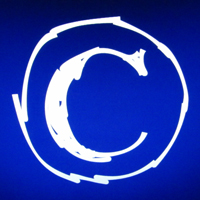- photo contests ▼
- photoshop contests ▼
- Tutorials ▼
- Social ▼Contact options
- Stats ▼Results and stats
- More ▼
- Help ▼Help and rules
- Login
61 - About Color Ramps - Blender Tutorial

In many real life situations - like skin or metals - the colour of diffuse and specular reflections can differ slightly, based on the amount of energy a surface receives or on the light angle of incidence. The new Ramp Shader options in Blender now allow you to set a range of colours for a Material, and define how the range will vary over a surface, and how it blends with the 'actual colour' (typically from material or as output of texture).
submitted: 5 years and 3493 days ago
62 - Specular Shaders - Blender Tutorial

Specular shaders create the bright highlights that one would see on a glossy surface, mimicking the reflection of light sources. Unlike diffuse shading, specular reflection is viewpoint dependent. According to Snell's Law, light striking a specular surface will be reflected at an angle which mirrors the incident light angle (with regard to the surface's normal), which makes the viewing angle very important.
submitted: 5 years and 3493 days ago
63 - Diffuse Shaders - Blender Tutorial

A diffuse shader determines, simply speaking, the general colour of a material when light is shined on it. Most shaders that are designed to mimic reality give a smooth falloff from bright to dark from the point of the strongest illumination to the shadowed areas, but Blender also has other shaders for various special effects.
submitted: 5 years and 3493 days ago
64 - More About Halo Materials - Blender Tutorial

Blender provides a set of materials which do not obey the face-shader paradigm and which are applied on a per-vertex rather than on a per-face basis. These are called Halos because you can see them, but they do not have any substance. They are like little clouds of light; although they are not really lights because they do not cast light into the scene like a lamp.
submitted: 5 years and 3493 days ago
65 - Vertex Paint - Blender Tutorial

Blender features a built-in painter that allows you to paint your mesh all sorts of pretty colors. This section describes the Vertex Painter, which paints your base mesh by assigning colors to vertices, and blending those to give a face a color. Just like having your own virtual airbrush.
submitted: 5 years and 3493 days ago
66 - Material Nodes Editor - Blender Tutorial
67 - Nodes Usage - Blender Tutorial
68 - Material Node Types - Blender Tutorial

The material nodes allow you to manipulate a material by routing it through a map of connected nodes. A starting material is routed through different nodes that do various things to the material, combined with other inputs or put back together, and finally output where it can be applied to a mesh, halo, particle, etc.
submitted: 5 years and 3493 days ago
69 - Multiple Materials - Blender Tutorial

We normally think of an object as having a single material; a color, maybe with a little texture. This works for modeling many of the simpler objects in the real world. However, the real world is not always that simple, and some objects get very complicated. Blender allows you to have multiple materials for different pieces of a mesh. This section describes how to use the multiple material features of Blender.
submitted: 5 years and 3493 days ago









